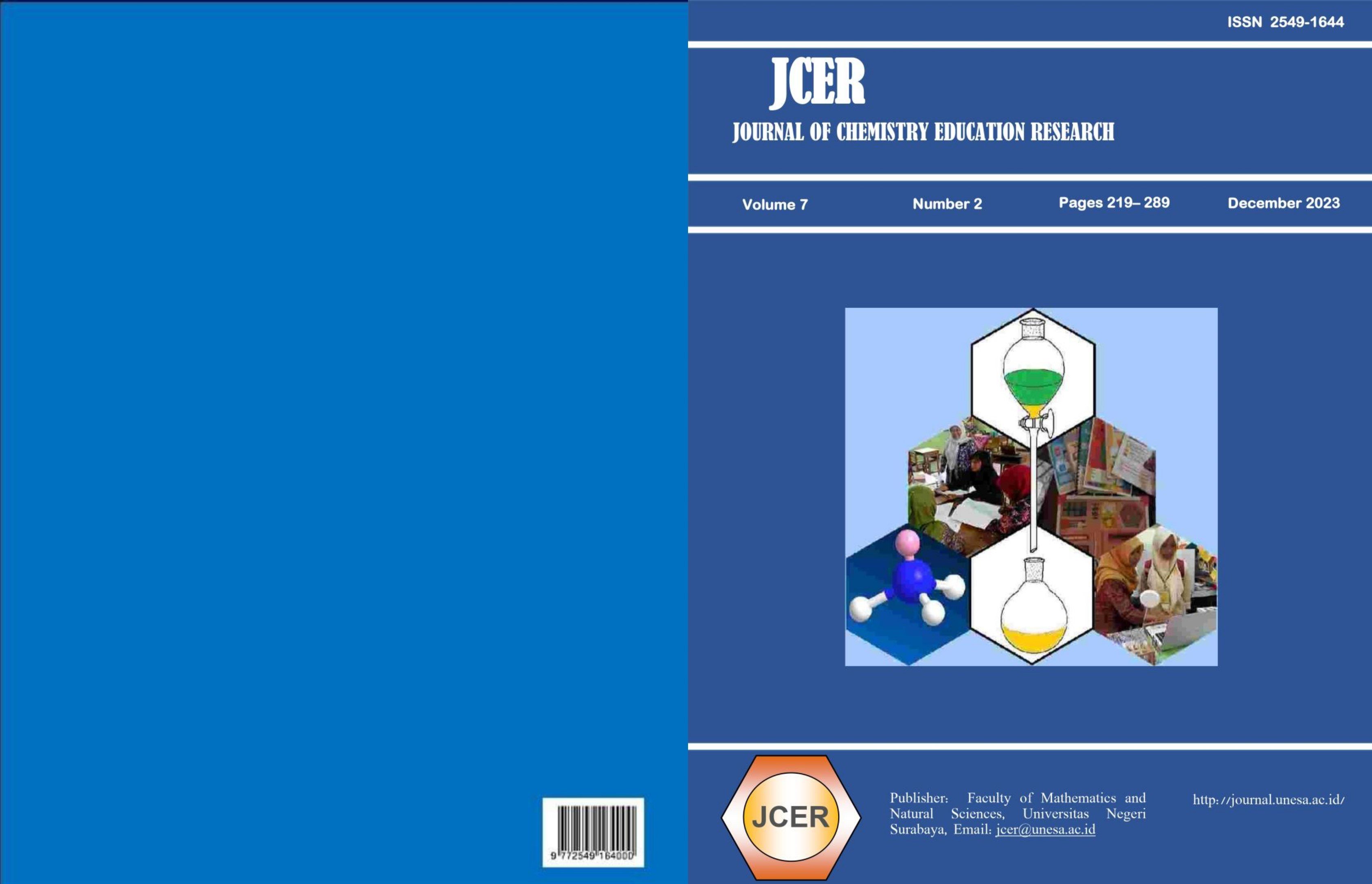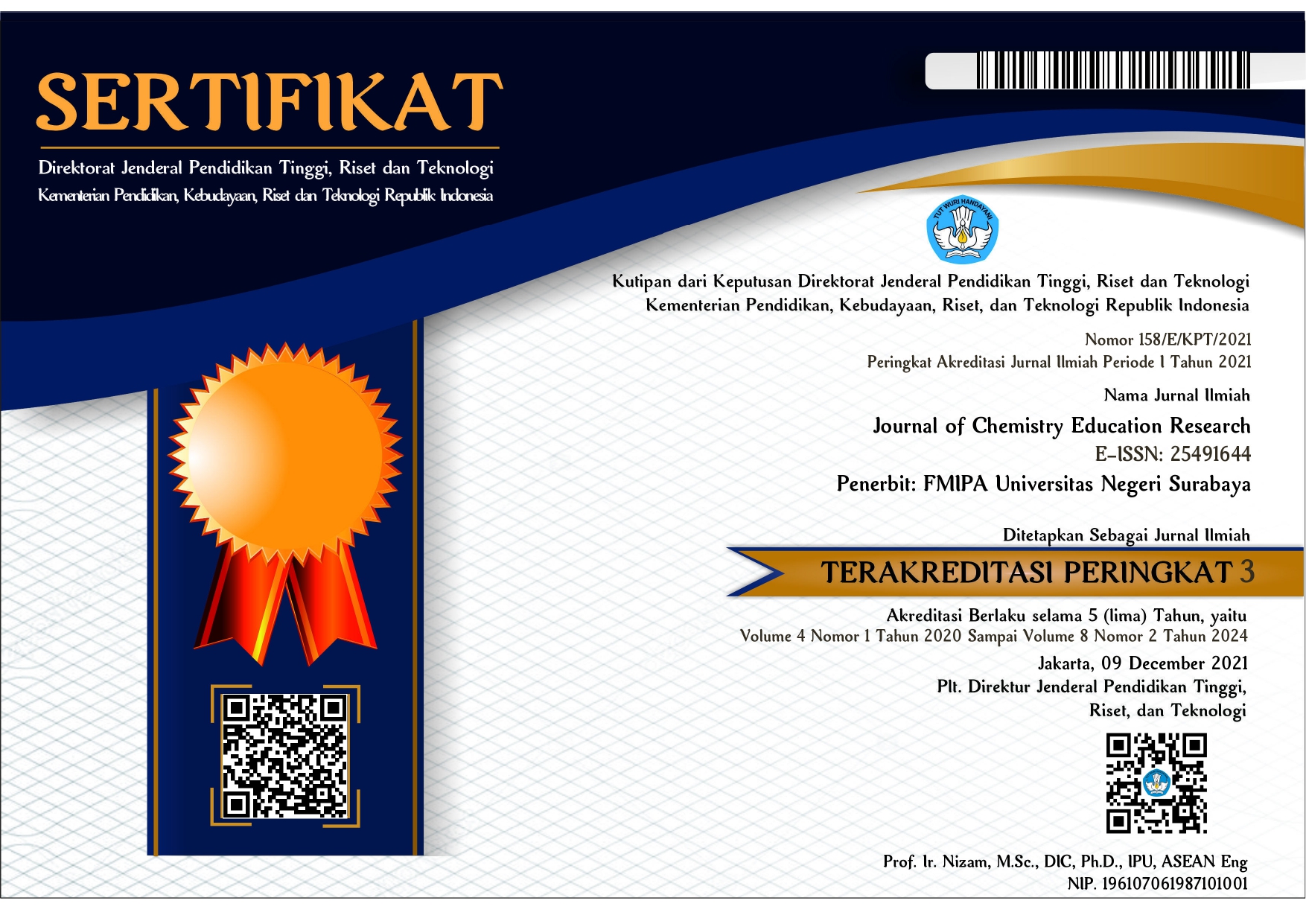The Effect of Using Chemdroid (Chemistry on Android) Media on Students' Self-Efficacy in Thermochemistry Material
DOI:
https://doi.org/10.26740/jcer.v7n2.p252-257Keywords:
android, chemdroid-media, self-efficacy, thermochemistryAbstract
This study aims to see the effect of using Chemdroid media on students’ self-efficacy in a thermochemistry topic. Chemdroid is Chemistry on Android. Self-efficacy is related to students’ beliefs in activities in the classroom. This type of research is quasi-experimental using post-test only control group design. In this study, two different classes were used which were declared to be normalyy distributed and homogeneous. The first class is the control class (CC-Class) which conducts conventional learning media as usual. The second class is the experimental class (EC-Class) which uses Chemdroid media for thermochemistry topic as a learning media in the classroom. Both classes have the same learning time, teacher and learning model. The instrument used in this study is a self-efficacy questionnaire that has been developed in previous studies but has been adapted to current research. The statement items used in this measuring instrument are 22 statements with 6 aspects. The test used is the Mann Whitney with the help os the SPSS program. The result of the analysis state that the significance is smaller than level of conficence. This proves that there is a significant difference with the use of Chemdroid media for a thermochemistry topic on the self-efficacy of the control class and experimental class students.
References
Sukasni, A., & Efendy, H. (2017). The Problematic of Education System in Indonesia and Reform Agenda. International Journal of Education, 9(3), 183. https://doi.org/10.5296/ije.v9i3.11705
Schiro, M. S. (2017). Teori kurikulum: visi-visi yang saling bertentangan dan kekhawatiran tanpa henti (E. Sulistyowati (ed.)). Indeks.
Ornstein, A. C., & Hunkins, F. P. (2009). Curriculum: foundations, principles, and issues (5th ed.). Pearson Education Inc.
Arsyad., A. (2007). Media Pembelajaran. Raja Grafindo Persada.
Anderson, R. K. (1994). Pemilihan dan pengembangan media untuk pembelajaran. Rajawali.
Solikhin, F., Ikhsan, J., & Sugiyarto, K. H. (2019). A need analysis in developing virtual laboratory according to the chemistry teachers. Journal of Physics: Conference Series, 1156. https://doi.org/10.1088/1742-6596/1156/1/012020
Santrock, J. W. (2011). Educational psychology (5th ed.). McGraw-Hill.
Schunk, D. H., Pintrich, P. R., & Meecee, J. L. (2010). Motivation in education: theory, research, and applications (3th ed.). Pearson Education Inc.
Fitriani, A., Zubaidah, S., Susilo, H., & Al Muhdhar, M. H. I. (2018). Studentsr Self-Efficacy on Biology Lesson of Senior High Schools in Bengkulu City, Indonesia. January. https://doi.org/10.2991/icomse-17.2018.40
Ormrod, J. E. (2003). Educational pyschology: developing learners (4th ed.). Pearson Education Inc.
Creswell, J. W. (2012). Educational research: planning, conducting, and evaluating quantitative and qualitative research (4th ed.). Pearson Education Inc.
Hew, K. F., & Cheung, W. S. (2014). Using blended learning evidence-based practices. Springer. https://doi.org/10.1007/978-981-287-089-6
Downloads
Published
Issue
Section
License

This work is licensed under a Creative Commons Attribution-NonCommercial 4.0 International License.
 Abstract views: 216
,
Abstract views: 216
, PDF Downloads: 199
PDF Downloads: 199



